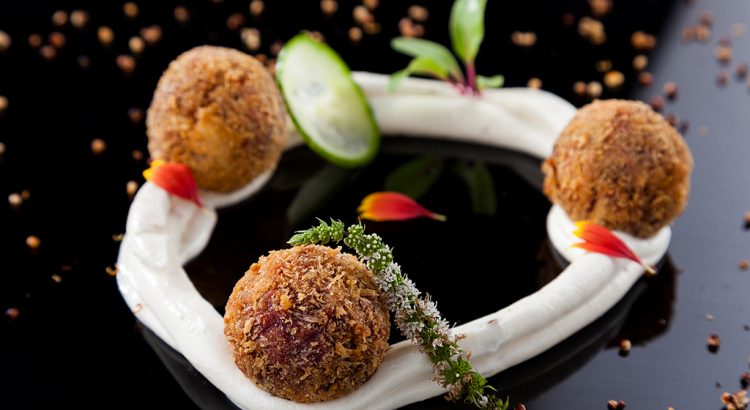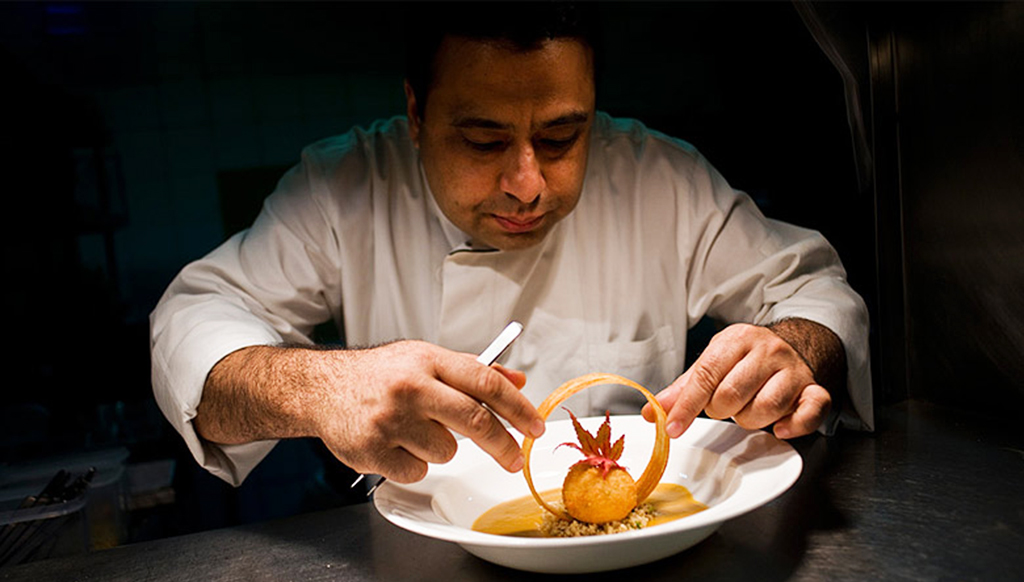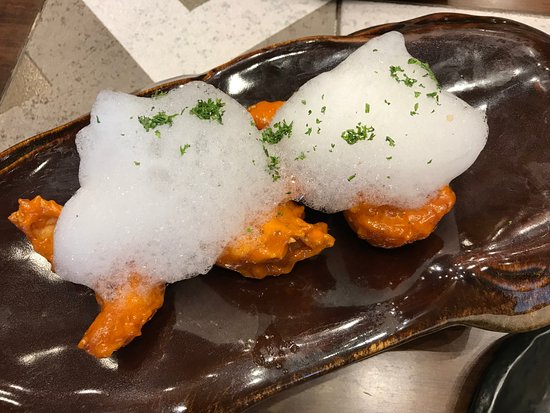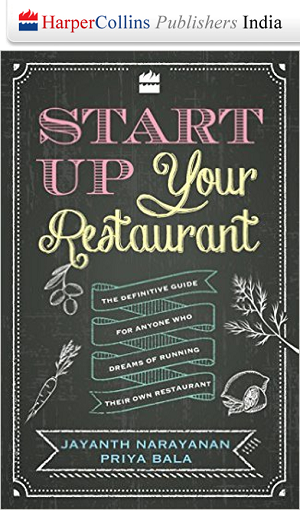
While we were researching for our book, Secret Sauce, we were able to tick off an item on our culinary must-do list, dining at the much-awarded Indian Accent, known for its edgy, modern Indian cuisine. This understated restaurant is the creation of seasoned and utterly sophisticated restaurateur Rohit Khattar and Chef Manish Mehrotra who is as assured as he is adventurous and inclined to experiment.

The preparation and serving of the meal seemed like choreography – from Burratta Papdi Chaat, through Pulled Kathal Phulka Taco, a standout Tofu Medu Vadai, Baked Aloo and Soya Chila, Kashmiri Morel Musallum, revolutionary Matter Paneer that wasn’t, Masala Wild Mushrooms, Water Chestnut, Paper Roast Dosai, to Haji Ali-inspired Custard Apple Cream and Black Carrot Halwa. The flawless wine pairings put the finishing touches to this indulgent dinner.
Indian Accent lays claim, justifiably, to being path-breaking pioneer in this new movement that Indian restaurants are beginning to embrace with enthusiasm. The modernising of Indian food is not confined to upscale restaurants where diners are willing to pay upwards of Rs 6000 per head for a tasting menu paired with wine. Even casual places which want to attract young customers with a Rs 1000 average spend per head believe modern/ trendy/ contemporary takes on Indian food are what the market wants.
This modernisation can take many forms; an unlikely ingredient might make it into a very traditional food, as is the case with Chef Manish Mehrotra’s blue cheese-stuffed mini kulchas. Or, chefs dabbling in molecular gastronomy could reimagine traditional dishes, turning chutneys into foams and deconstructing kachori chaat. Sometimes, the integrity of the original remains intact and only the presentation is modern. The possibilities are endless.
Purists and traditionalists may baulk. Rohit Khattar said during a conversation with him that he himself was daunted by the prospect. “You cannot experiment with shaky basics. (Chef) Manish’s strength is that his fundamentals are very strong and he has an innate sense of being able to combine even the most unlikely ingredients. And, most importantly, he’ll never put on the plate anything that tastes less than delicious.”
The waves that Indian Accent is making has encouraged and inspired other restaurants to take the route. Some get it right, others fall flat, imitating blindly and failing to grasp how challenging it is to take a centuries old cuisine and tweak it. The lesson here is that it’s a treacherous path and only the most accomplished must set forth.

After the gourmet experience at Indian Accent there was another sort of culinary discovery, eating in the small towns of the North. There was Missi Roti on a highway beyond Etawah and a fantastic Baingan Bharta and Aloo Matter with fresh winter peas in a dhaba. Also, Kachoris topped with kala channa in Varanasi, Daulat ka Chaat that can hold its own against the most elegant soufflé and everywhere Masala Chai in earthen cups so good it was a crime to pay just Rs 5 for one.

So, the debate continues. Should we modernise Indian food when the original and the traditional is so soul-satisfyingly brilliant? Those who venture to experiment must do so only if they can better that. We’d love to hear which side of the divide you’re on.










